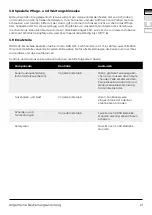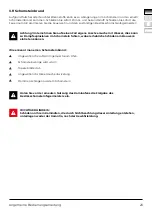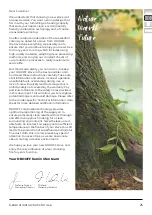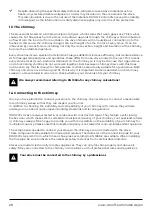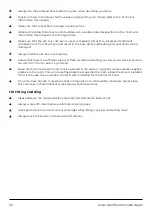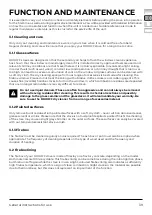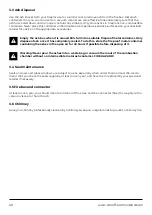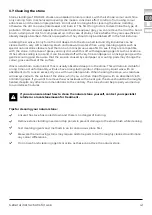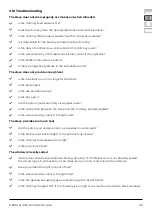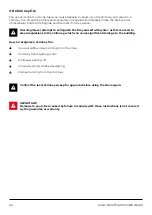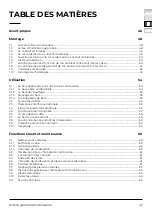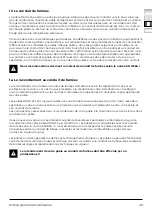
www.drooff-kaminofen.de/en
34
2.1.2 Firewood
It is very important that you only burn dry wood. After a suitable storage period of 1.5–2.5 years in
the open air, logs reach a residual moisture content of 15–19%, which makes them best suited for
combustion. If you want to be able to determine the residual moisture in the wood, use a commercially
available wood moisture meter, which should also be stocked by your specialist retailer. Split a log
through the middle and measure halfway along the length at the core, not the end grain. The calorific
value of the wood is heavily dependent on its quality and moisture content. The more water the
wood still contains, the more energy is required to evaporate it during combustion. This means that
the wetter the wood, the lower its calorific value.
Freshly cut wood has a very high moisture content, which means it burns poorly. The calorific value is
low, and so the environment is heavily polluted. What’s more, the increased condensate and tar loads
of the flue gases can create an accumulation of soot in the stove or chimney, and any windows quickly
become dirty. The calorific value of wood also differs greatly from one type of wood to the next. In terms
of wood weight, the calorific value of softwoods such as spruce, pine or fir is significantly higher than
that of hardwoods such as birch, oak or beech. In terms of wood volume, on the other hand, hardwoods
have a higher calorific value than softwoods.
The table below shows the calorific value of different wood types:
Softwood burns faster and at higher temperatures than hardwood, which is mainly due to the higher
resin content. When it comes to heating, slower but more sustainable heat development is generally
preferable. Ultimately, the choice of which type of wood is more suitable comes down to the intended use.
As hardwood burns somewhat more slowly, which means it can provide heating energy over a longer
period of time, this can be useful for heating overnight.
The faster burning of the softwood with the faster energy release, on the other hand, offers higher
temperatures in a shorter time, which seems more appropriate for heating a cooler room. Softwood is
also the ideal choice for kindling to speed up the process.
2.1.3 Preparation and storage
Wood needs time to dry out. After approx. 1.5–2.5 years, wood has a residual moisture content of less than
19 % when stored correctly. This is known as being ‘air dry’. For this purpose, it should be split and stored
in a well-ventilated pile away from rain.
2.1.4 Wood briquettes
Wood briquettes are mainly divided into hardwood and softwood briquettes. They stack well and have a
particularly low residual moisture. Hardwood briquettes are also particularly suitable for keeping embers
glowing. As qualities can vary, a test burn is recommended before buying larger quantities.
Hardwood
Birch
Spruce
Beech
Pine
Oak
Fir
Softwood
kWh/kg
4.30
4.50
4.00
4.40
4.20
4.50
kWh/kg
Summary of Contents for Andalo 3 L
Page 2: ...2 ...
Page 3: ...Deutsch 4 English 25 Français 46 Nederlands 67 3 ...


